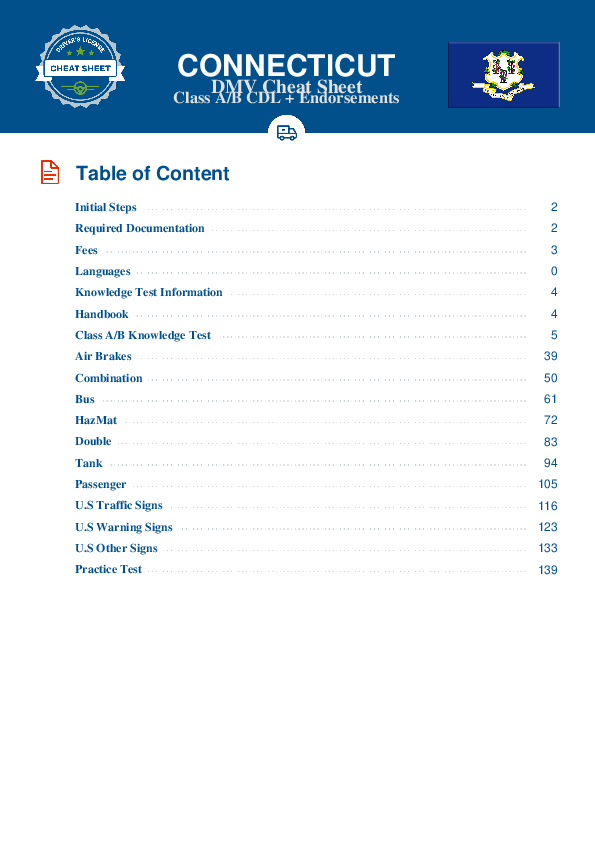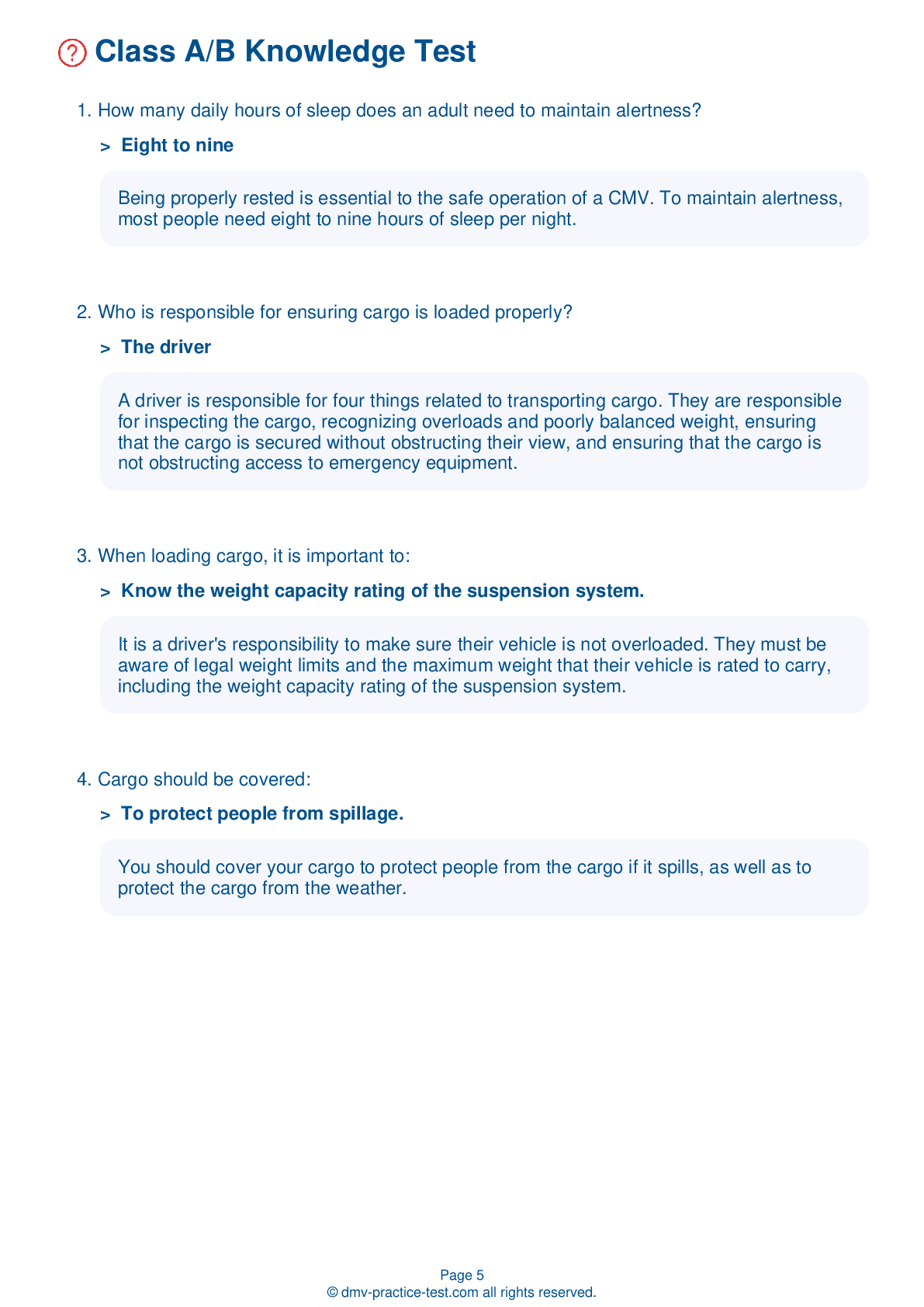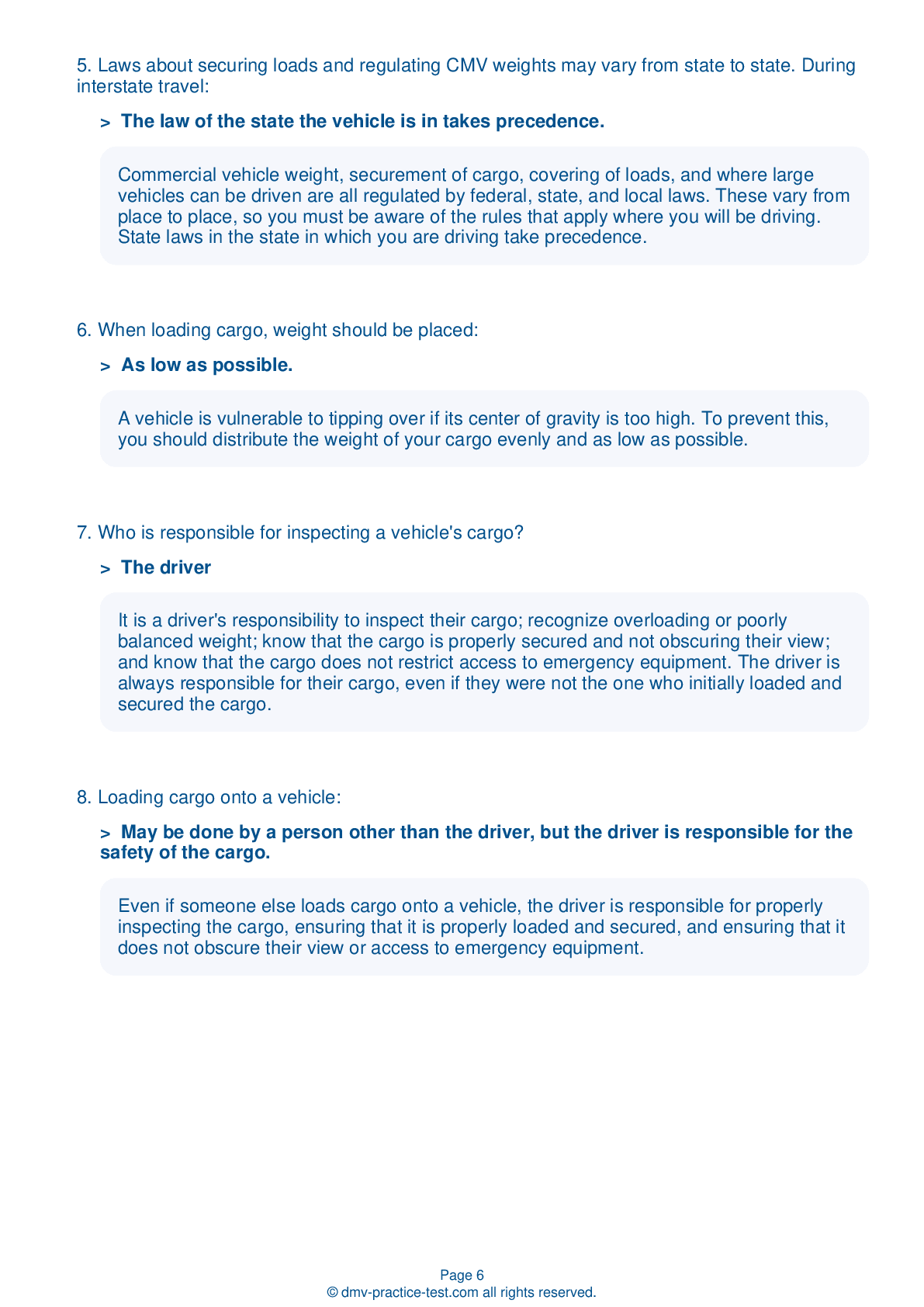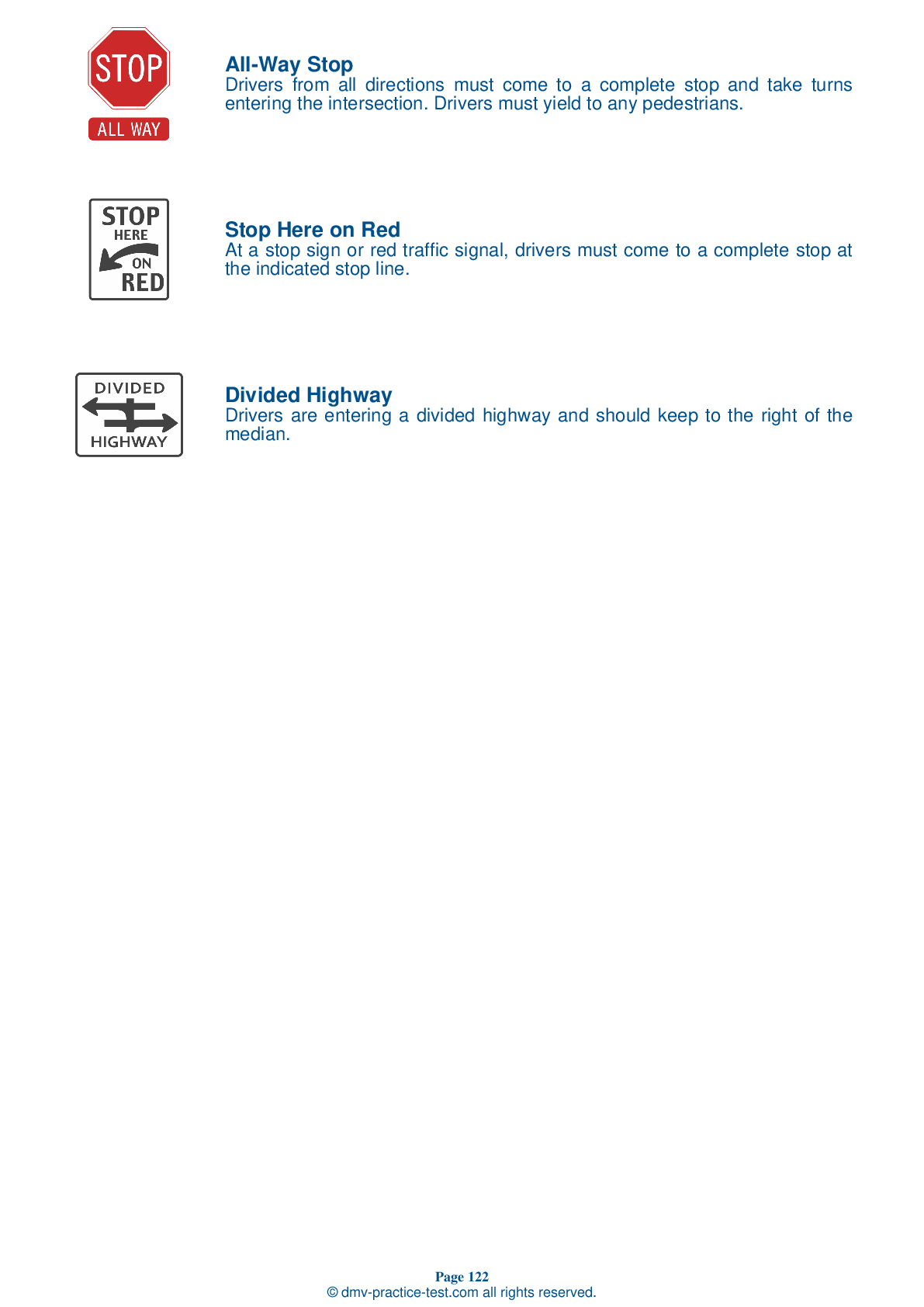Knowledge Test Class A #1
Class A Driving Test | Connecticut 2025 #1 Page 6 of 7
Train for FREE online with our Connecticut class A license test. The official exam test consists of several obligatory parts, with all of them checking your knowledge of different blocks of road rules. If you need to obtain a CT CDL class A permit in 2025, practice as much as possible. Free sample tests published on our website will help you check and improve your knowledge and boost your grades. Please bear in mind that CDL class A requirements may vary from state to state.
50
40
20
36 . If you must stop on the side of a one-way or divided highway, how far behind your vehicle should you place warning devices?
If you must stop on or by a one-way or divided highway, you must place a warning device 10 feet, 100 feet, and 200 feet to the rear of your vehicle.
37 . When backing a truck, you should:
When backing a truck, always use the mirrors on both sides of the vehicle. Have someone help you whenever possible.
38 . When taking the basic control skills test, drivers are:
Allowed to leave the vehicle, but only if the vehicle is placed in neutral and the parking brake is set.
During the basic vehicle control skills test, you must place the vehicle in neutral and set the parking brake before exiting the vehicle to check its position. You may check the position of the vehicle no more than twice, except during the straight line backing exercise, where you may look no more than once.
39 . The brake pedal is part of which braking system?
The auxiliary brake system
The service brake system applies and releases the brakes when a driver presses the brake pedal while driving normally.
40 . The safety valve located on the first tank opens:
After every stop.
In an air brake system, the first tank that receives compressed air has a safety valve that releases air if the pressure gets too high. It is usually set to open at 150 psi. If the valve must open, there is a fault in the system that should be repaired by a mechanic.
41 . What is another name for front end header boards?
Bonkers
Front-end header boards, also known as "headache racks," protect the driver from cargo moving in the event of a crash or emergency stop.
42 . When starting a vehicle with dual air brakes, pressure of ____ should be built up in the system before it is driven.
200 psi
Before driving a vehicle with a dual air brake system, allow time for the air compressor to build up pressure of at least 100 psi in both the primary and secondary systems.
2025 Connecticut | Frequently Asked Questions
To secure a CDL Doubles/Triples endorsement in Connecticut, you must first have a Commercial Driver's License (CDL). Then, you'll need to pass the Doubles and Triples Endorsement Test, which covers knowledge on coupling and uncoupling, inspecting doubles and triples, and handling. It's recommended to study the Connecticut CDL manual before taking the test.
To obtain a CDL Doubles/Triples license, you first need a valid Commercial Driver's License (CDL). Then, pass the Doubles/Triples Endorsement Test. The test covers knowledge on coupling and uncoupling, inspecting doubles and triples, and their handling. Study the relevant state's CDL manual thoroughly before taking the test to ensure a passing score.
While not mandatory, it's beneficial to have specialized training for a CDL Doubles/Triples endorsement. This endorsement requires passing a knowledge test on handling, inspecting, and coupling/uncoupling double and triple trailers. Studying the state's CDL manual prepares you for this test. Practical experience driving these vehicles can also be advantageous.
Yes, an additional written knowledge test is mandatory to obtain a CDL Doubles/Triples endorsement in Connecticut. This test covers specific areas such as coupling and uncoupling, inspecting doubles and triples, and pulling double/triple trailers. No additional driving skills test is required beyond the initial CDL test.
The CDL Doubles/Triples endorsement test is a written knowledge test, so no specific driving maneuvers are needed. The test covers topics like coupling and uncoupling, inspecting doubles and triples, and handling these types of vehicles. It's crucial to understand these concepts thoroughly to pass the test. Practical skills are typically assessed during the general CDL road test.
No, it is not permissible to operate double/triple trailers without a valid CDL Doubles/Triples endorsement in Connecticut, or any other state. This endorsement is required to ensure that drivers have the necessary skills and knowledge to safely handle these types of vehicles on the road. Operating without it can result in serious penalties.
You can append the CDL Doubles/Triples endorsement to your existing Commercial Driver's License in Connecticut. You don't need to initiate a new application for a CDL, but you must pass the Doubles/Triples written knowledge test and pay the required fee to add the endorsement to your license.
Yes, there are limitations for drivers holding a CDL Doubles/Triples endorsement. Drivers must adhere to specific weight and length restrictions for the trailers. Also, certain roads or areas may prohibit the operation of double/triple trailers. Plus, regular medical examinations are required to ensure drivers are physically capable of safely operating these vehicles. Always check local and state regulations.
In Connecticut, the maximum gross vehicle weight for double/triple trailers is 80,000 pounds. The maximum length for any one semi-trailer is 48 feet, with an overall length limit of 65 feet for the combination of all trailers. However, exceptions may apply for certain types of freight or routes. Always follow specific regulations and guidelines.
Yes, there are specific safety guidelines for driving double/triple trailers. Drivers must have knowledge of how to couple and uncouple correctly, inspect their vehicle, check brake systems, and distribute cargo weight evenly. They should also be aware of the "crack-the-whip" effect unique to doubles/triples, and they must adhere to all general CDL safety regulations.



